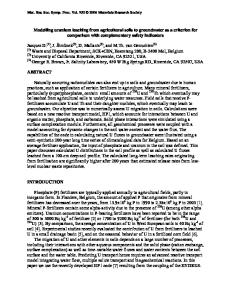Agricultural Grassland on Mesic to Wet Soils
This chapter reviews our knowledge about the vegetation and ecology of Central Europe’s agricultural grasslands, which form the basis of livestock production. It describes the flora of managed grasslands, the development of pastures and meadows in the pas
- PDF / 6,473,436 Bytes
- 135 Pages / 439.37 x 666.142 pts Page_size
- 76 Downloads / 287 Views
Agricultural Grassland on Mesic to Wet Soils
Over a third of the utilised agricultural area of Central Europe is now managed as permanent grassland. As meadows, pastures, or a mixture of the two, it forms the basis of livestock farming. The proportion of grassland is particularly high in the German and Dutch lowlands near the North Sea coast, and in the Central European uplands and Alpine and Carpathian regions, where the climate is too harsh for arable farming. In some of these regions, grassland can make up more than 70 % of the agricultural area. Whilst fertilised grassland in the lowlands of southern Central Europe was almost always mown until around 1960, the northern and particularly northwestern lowlands have been mostly grazed for centuries. The cause of this shift in use from south to north was (and still is) the increasingly oceanic climate, reducing the severity of the summer drought and the winter cold. The winter temperatures largely determine the length of the growing season and therefore also the length of the grazing season. For example, livestock can graze for over 250 days per year in southwestern England, but only 200–210 days in Belgium, the Netherlands and northwestern Germany, 165 days in the lowland areas of western Germany, and less than 120 days in eastern Central Europe. The need for winter fodder increases correspondingly. Late frosts, which are more common in more continental climates, delay the beginning of grazing in spring. The milder winters experienced in Germany as a result of climate warming means that winter grazing has become increasingly important here in recent decades. However, indoor cattle rearing with feeding of maize and soybean silage has also greatly increased in many regions with the shift to industrialised livestock farming. In the past, it was only in oceanic western Central Europe that summer livestock pastures used to reach down into the low hills and lowlands. In the east and the south, summer grazing was limited to higher elevations in mountain areas and in the rainy edges of the Alps. It was only with the introduction of modern rotational grazing with long resting periods that high-yielding grazing that was not disturbed by summer droughts was also possible in the drier lowlands. This change led to a
© Springer International Publishing Switzerland 2017 C. Leuschner, H. Ellenberg, Ecology of Central European Non-Forest Vegetation: Coastal to Alpine, Natural to Man-Made Habitats, DOI 10.1007/978-3-319-43048-5_8
597
598
8 Agricultural Grassland on Mesic to Wet Soils
b lurring of the once so clear contrast in the grassland-dominated landscapes of northwestern and southern to eastern Central Europe. In addition to meadows and pastures in the strict sense, there are also other vegetation types dominated by grasses interspersed with forbs or dwarf shrubs. These include salt marshes (see Chap. 1), dry and/or nutrient-poor grasslands (see Chap. 7), alpine grasslands above the timber line (see Chap. 5), some grass-rich mires (see Chap. 3) and the dwarf shrub heat
Data Loading...











